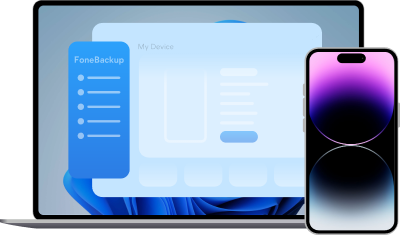Android File Transfer Could Not Connect to Device on Mac
Learn several practical tips for fixing Android File Transfer could not connect to device. Additionally, this article presents alternatives to Android File Transfer to resolve any ongoing issues with the app.
Android File Transfer is a conduit for data exchange between Mac computers and Android devices. The process involves downloading and installing the Android File Transfer application on the Mac, establishing a connection between the device and the Mac, and then browsing through the files and folders on the Android device to facilitate file copying.
However, there have been some issues with the functionality of the Android File Transfer service, with users on Android forums expressing concerns such as "Android File Transfer could not connect to the device" or "Android File Transfer can’t access device storage" even though the app detects a connected phone.
To deal with these challenges, this post has put together a series of tips to help you easily solve the "Android File Transfer did not find Android device" issue.
Android File Transfer Could Not Connect to Device?- Possible Reasons
If you find “Android File Transfer cannot connect to device”, several factors might be causing the disruption:
- Faulty USB Cable or Port: A damaged USB cable or malfunctioning port can prevent a stable connection between your devices.
- Disabled File Transfer on Android: Ensure the File Transfer option is enabled on your Android device; otherwise, it won't be recognized by your Mac.
- Interference from Other Services: Apps like Samsung Smart Switch, Samsung Kies, or similar Android transfer tools might conflict with the Android File Transfer app, disrupting the connection.
How to Fix Android File Transfer Could Not Connect to Device
Whatever the cause, troubleshooting the issue “Android File Transfer not connecting to device”is within reach. Here are some useful tips for this issue. Read on!
Fix 1. Restart Your Mac
One of the simplest ways to fix ”Android transfer could not connect to device“ is trying to restart your Mac. Attempt using the uninstaller provided with Android File Transfer, followed by rebooting your Mac system.
Fix 2. Remove Samsung Kies or Smart Switch
If you own a Samsung Galaxy S9/S8/S7/S6/Note 8 and encounter issues with Android File Transfer on your Mac, ensure that Samsung Kies or Smart Switch is not installed. If these apps are present, uninstall them as Android File Transfer may not function correctly alongside Kies or Smart Switch.
Fix 3. Enable USB Debugging
Another way to fix this issue is to enable USB Debugging. Here is a full guide:
Step 1. Begin by testing with a different USB cable to determine if the issue persists. Link your Android device to your Mac using a USB cable.
Step 2. Access the Settings menu on your Android device by swiping down from the top of the screen.
Step 3. Enable USB Debugging and select the Media device (MTP) option. Or, experiment by switching to PTP mode and then reverting back to MTP.
Fix 4. Enable Use USB for File Transfers
If an Android file transfer fails due to a faulty USB cable, simply replacing the cable may not be enough. This issue may persist as the file transfer configuration blocks the Mac-Android link.
Unlock your phone when linking your Android device to a Mac. Look for the notification pop-up window and select the USB connection option from the notification panel. In this menu, select File Transfer to activate the file transfer feature on your device.
Bonus Tip: Use the Android File Transfer Alternative for Data Transfer
In addition to relying exclusively on Android File Transfer, several alternatives simplify the process of transferring files on Android devices, making AOMEI FoneBackup for Android the preferred tool for Android file transfers. This alternative not only facilitates file transfer between Android devices but also iPhone and Android.
To initiate the transfer process from iPhone to Android, you can download AOMEI FoneBackup for Android by clicking the provided button and installing AOMEI FoneBackup for iOS. Follow the steps below for a seamless transfer:
Step 1. Launch AOMEI FoneBackup on both your Android phone and iPhone. Grant AOMEI FoneBackup permission to utilize WLAN (simply activate Wi-Fi without connecting to a network) and proceed to Connect Device.
Step 2. On your Android device, select Connect to iOS to generate a QR code. Utilize your iPhone to scan this code and establish a connection between the two devices.
Step 3. Within the iPhone interface, navigate to File Transfer > Select the files you wish to transfer, such as photos, videos, and contacts > Click Send to transfer.
Step 4. On your Android device, tap Confirm to receive the incoming files seamlessly.
Moreover, experimenting with the desktop iteration of AOMEI FoneBackup enables you to transfer files from your iPhone to your computer and between iPhone devices. Download AOMEI FoneBackup and enjoy its wonderful features for iPhone transfer and backup.

- Transfer unlimited files between iPhone and PC.
- Easily move photos, videos, music, contacts and ringtones.
- Fast transfer speed allows you to move 1000 + photos in 10 minutes.
- Preview and select files as you like to begin the transfer.
- Safe USB connections protect all your iPhone data from loss.
- Support various iOS models and versions (iPhone 16/iOS 18).
The Bottom Line
After reading this post, you know how to fix Android File Transfer could not connect to device. If you are tired of fixing this issue, you can try an alternative tool such as AOMEI FoneBackup to move and manage your Android data. In addition to data transfer between iPhone and Android, AOMEI FoneBackup is a great iPhone to Windows file transfer app to help you effectively manage your iPhone. Try it out!

